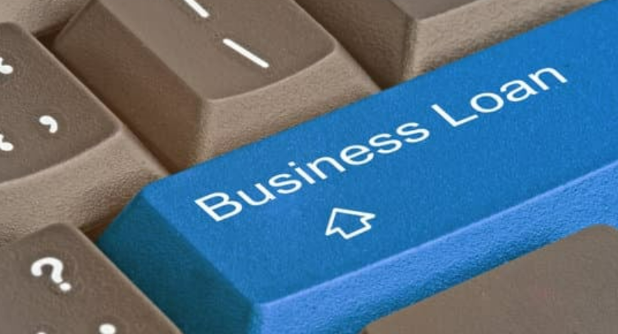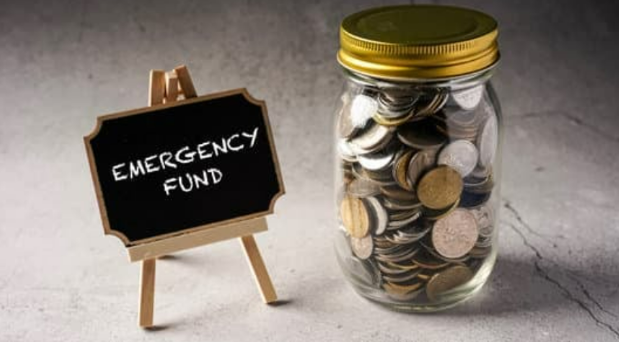
In times of financial crisis or unexpected expenses, securing quick and reliable access to funds is essential. Emergency loans provide a crucial lifeline not only for individuals but even small or start-up businesses facing urgent financial needs. Australia offers a variety of options for those seeking such assistance, each tailored to specific circumstances. From traditional bank loans and credit cards to government-supported schemes and community-based initiatives, understanding the different types of emergency loans available can make a significant difference in managing unforeseen financial challenges.
Defining Emergency Loans
Emergency loans are designed to help bridge the gap when faced with unexpected business expenses. Their significance lies in the speed and accessibility they offer, enabling borrowers to secure funds quickly to address critical needs.
In Australia, emergency loans are crucial for maintaining financial stability and avoiding the potential consequences of unpaid bills or mounting debt. It’s essential to differentiate emergency loans from standard personal loans and other borrowing options. Unlike conventional personal loans, emergency loans are tailored for immediate financial needs and are typically processed more rapidly. They often have more lenient eligibility criteria, making them accessible to a broader range of individuals, including those with less-than-perfect credit.
While traditional personal loans may involve a longer application and approval process, emergency loans are known for their quick turnaround, providing much-needed funds within a short time frame. This key distinction makes emergency loans an essential resource for Australians dealing with unexpected financial challenges. For instance, a $1000 quick loan with no credit check can be a practical solution for those needing immediate financial relief without the hassle of a detailed credit assessment.
Payday Loans
Payday loans are a type of emergency loan widely available in Australia, offering a quick and relatively accessible solution for those facing urgent financial needs. These loans are typically short-term and unsecured, meant to provide immediate relief to borrowers in need of a small amount of money, usually ranging from a few hundred to a couple of thousand dollars. They are often used to cover unexpected expenses like medical bills, car repairs, or utility bills that cannot wait until the next payday.
Key Features of Payday Loans
- Short-term Nature: Payday loans have brief loan terms, usually spanning from a few weeks to a couple of months.
- Repayment Structure: Borrowers are required to make a single lump-sum payment, encompassing the borrowed amount, interest, and fees.
- High Costs: Payday loans often come with high-interest rates and fees, making them a relatively expensive borrowing option.
To access payday loans in Australia, businesses can apply online or in-store at payday lending businesses, which are regulated by the Australian Securities and Investments Commission (ASIC). While payday loans provide quick financial relief, borrowers must be aware of the high interest rates and fees associated with these loans, making them a costly borrowing option. Therefore, they should only be used when there are no alternatives and with a clear plan for timely repayment to avoid falling into a cycle of debt.
Online Personal Loans
Online personal loans offer a convenient and accessible way to secure funds for various urgent needs, such as medical expenses, home repairs, or debt consolidation.
Key Features of Online Personal Loans
- Interest Rates: Online personal loans typically come with competitive interest rates, which can vary depending on the lender and the borrower’s creditworthiness.
- Loan Terms: Borrowers can choose from various loan terms, ranging from a few months to several years, allowing them to align the repayment period with their financial situation.
- Repayment Schedules: These loans often offer flexible repayment schedules, including monthly or bi-weekly installments, making it easier for borrowers to manage their finances.
Application Process for Online Personal Loans:
- To access online personal loans in Australia, you can apply through lenders’ websites or online platforms.
- The application process typically involves providing personal and financial information, including income, expenses, and credit history.
- Lenders may conduct credit checks to assess the borrower’s creditworthiness and determine the loan terms and interest rates. If you have a less-than-ideal credit score, you can also opt for no credit check loans that several lenders may offer.
- Once approved, the funds are usually deposited directly into the borrower’s bank account, offering a quick and convenient solution for managing financial emergencies.
Cash Advances
Cash advances are a form of emergency loan that allows Australians to obtain quick cash by borrowing against their credit card’s available credit limit. They offer a way to access funds in times of need, similar to a short-term loan, but the borrowed amount is typically limited to a portion of the credit limit.
Obtaining Cash Advances through Credit Cards or Check-Cashing Services
- Credit Card Cash Advances: To obtain a cash advance through a credit card, cardholders can use their card at an ATM to withdraw cash, or they can request a cash advance from their card issuer. The amount that can be borrowed is usually subject to a cash advance limit, which is a percentage of the total credit limit.
- Check-Cashing Services: In some cases, people without credit cards may use check-cashing services to receive cash advances by providing a post-dated check as collateral. These services often charge fees for convenience.
Benefits and Drawbacks of Cash Advances
Benefits
- Quick Access to Cash: Cash advances provide rapid access to funds, making them suitable for emergencies.
- No Formal Application: Credit card cash advances do not typically require a separate application process since they are accessed through the credit card.
Convenience: They can be obtained from ATMs or, in the case of credit cards, often directly from financial institutions.
Drawbacks
- High Costs: Cash advances are associated with substantial fees and higher interest rates compared to regular credit card purchases, making them an expensive option.
- Limited Borrowing Amount: The amount that can be borrowed through cash advances is often restricted to a portion of the credit limit.
- Risk of Debt Cycle: Relying on cash advances can lead to a cycle of debt if not managed carefully, as the high costs can make repayment challenging.
Short-Term Loans
Short-term loans are a financial tool designed to address immediate financial needs by providing quick access to a relatively small amount of money. They play a crucial role in helping individuals in Australia bridge financial gaps during emergencies or unexpected expenses.
Key Features of Short-Term Loans
- Interest Rates: Short-term loans come with varying interest rates, which can be competitive but are generally higher than traditional personal loans.
- Borrowing Limits: Borrowers can typically access smaller amounts, often ranging from a few hundred to a few thousand dollars, depending on the lender.
- Repayment Schedules: Short-term loans have shorter repayment periods, usually spanning from a few weeks to a few months. Repayment may be in the form of lump-sum payments or multiple installments.
Eligibility and Approval
Lenders typically evaluate eligibility for emergency loans by considering various factors, including the applicant’s income, employment status, and credit history. Eligibility criteria may vary among different types of emergency loans, such as payday loans, online personal loans, or short-term loans.
The Typical Approval Process and Influencing Factors
- The approval process often involves submitting an application, providing necessary documentation, and meeting specific criteria set by the lender.
- Factors that can influence approval include the borrower’s income, employment stability, and the purpose of the loan. Lenders may also assess the borrower’s ability to repay the loan based on their current financial situation.
- Some lenders may require collateral for certain types of emergency loans, while others do not, depending on the risk associated with the loan.
The Role of Credit Checks in Determining Approval
Credit checks play a significant role in assessing the creditworthiness of the borrower. Lenders may perform a credit check to gauge the applicant’s credit history, including their payment history, outstanding debts, and credit score.
A positive credit history can improve the chances of approval, while a poor credit history may lead to higher interest rates or, in some cases, denial of the loan application. However, some emergency loans, like payday loans, may not heavily rely on credit checks, making them accessible to people with less-than-perfect credit.
Benefits and Considerations
Payday Loans
- Quick Access: Payday loans offer rapid access to cash, making them suitable for immediate needs.
- Accessibility: They are often available to borrowers with less-than-perfect credit.
- Simplicity: The application process is straightforward, and there is no need for collateral.
Online Personal Loans
- Competitive Rates: Online personal loans typically come with lower interest rates compared to payday loans.
- Flexible Terms: Borrowers can choose from various loan terms and repayment schedules.
- Higher Borrowing Limits: They offer the possibility to borrow larger amounts compared to payday loans.
Short-Term Loans
- Speed and Convenience: Short-term loans provide quick access to funds and are convenient for addressing immediate financial needs.
- Various Use Cases: They can be used for a range of emergencies, from urgent bills to vehicle repairs and debt consolidation.
Cash Advances
- Access through Credit Cards: Cash advances can be obtained conveniently through credit cards, eliminating the need for an application process.
- Immediate Access: They offer quick access to cash without having to apply for a separate loan.
Considerations for Choosing the Most Suitable Loan
- Emergency Type: Consider the nature of your emergency. If you need immediate cash for a medical bill, a payday loan or cash advance might be more appropriate. For larger expenses or debt consolidation, an online personal loan or short-term loan could be a better fit.
- Interest Rates and Costs: Compare the interest rates and associated costs of different loan options. Lower rates can save you money in the long run, so it’s essential to weigh the costs against the urgency of your situation.
- Repayment Ability: Assess your ability to repay the loan within the specified terms. Ensure that the chosen loan aligns with your financial capabilities to avoid potential financial strain.
- Credit History: Depending on your credit history, some loan options may be more accessible than others. Consider your credit score and how it may impact your approval and interest rates.
- Loan Terms: Review the loan terms, including the repayment period and schedule, to ensure they align with your needs and financial situation.
- Lender Reputation: Research the reputation and credibility of the lender, as well as any regulatory oversight, to ensure you are working with a trustworthy financial institution.
- Alternative Options: Explore alternative sources of financial assistance, such as friends, family, or community support, before committing to a specific loan type.
Carefully considering these factors will help you select the most suitable emergency loan to address your specific financial needs while minimizing the associated risks and costs.
In times of financial distress, understanding the diverse array of emergency loan options is essential for making informed decisions that can provide much-needed relief. Whether it’s the rapid accessibility of payday loans, the competitive rates of online personal loans, the versatility of short-term loans, or the convenience of cash advances, each type of emergency loan has its unique advantages.
 Convenience: They can be obtained from ATMs or, in the case of credit cards, often directly from financial institutions.
Convenience: They can be obtained from ATMs or, in the case of credit cards, often directly from financial institutions.











